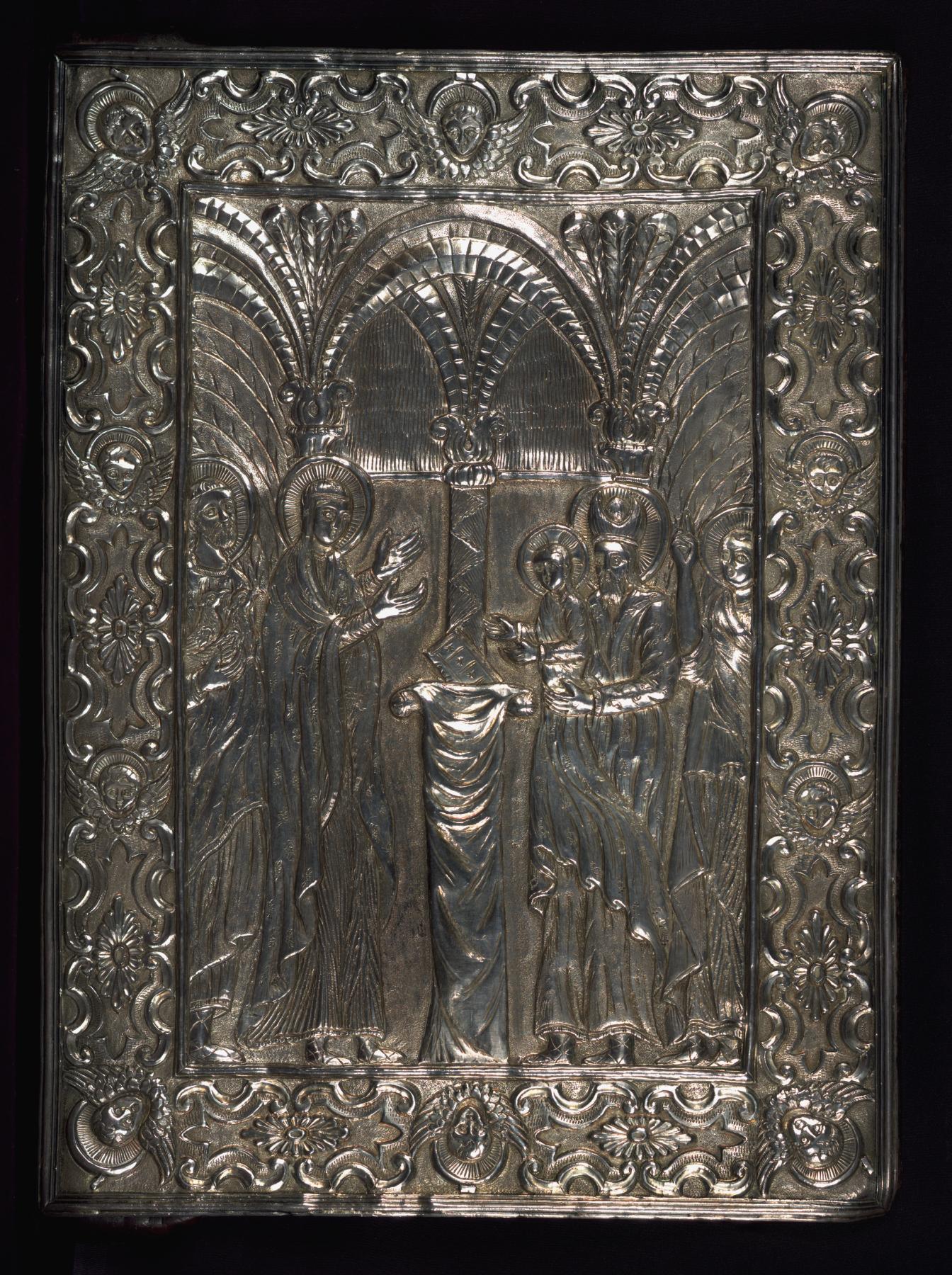Silver Gospels
(Manuscripts and Rare Books)
This Gospels manuscript was written in 937 of the Armenian era [1488 CE] in the province of Ekeeac' by the priest azar at the monastery of Surb Awgsend (St. Auxentius). Though the fifteenth-century manuscript was not a terribly costly production, it later came to be housed in a magnificent binding with large silver plaques showing the Presentation of the Christ Child in the Temple on the front and the Ascension on the back. This silver binding, which can be assigned to the seventeenth or early eighteenth century, was likely produced in Kayseri (Turkey). The manuscript's fifteenth-century Evangelist portraits show signs of Mongolian artistic influence, stemming from the time when Mongols had conquered the province. For a manuscript of similar style, see the Gospels in Jerusalem, no. 298, copied by Maghakia in 1497. The Walters' Silver Gospels was used over a long period by a succession of owners. Information about its history is given in its colophons and ownership inscriptions on the codex's final folios. One note indicates that the book was rebound in 1626, and offered to the church of Surb Astuacacin (Holy Theotokos) in memory of Caruk, Kirakos, and Girigor (fol. 280r). The last date given is the Armenian year 1161 (1712 CE), which may be when the manuscript was rebound.
Provenance
Provenance (from the French provenir, 'to come from/forth') is the chronology of the ownership, custody, or location of a historical object. Learn more about provenance at the Walters.
Created by Lazar, monastery of Surb Awgsend (St. Auxentius), Ekeghiatz province [near Yerevan]), 1488, for Eghia and family. Eliay, Armenia, before 1626, by purchase; church of Surb Astuacacin (Holy Theotokos), Armenia, 1626, by gift [1]. Pahatur, Armenia, [date and mode of acquisition unknown]; Priest Nerses, Armenia, 1712, [mode of acquisition unknown] [2]. Dikran Kelekian, New York and Paris, by 1920/1925, [mode of acquisition unknown] [inv. no. 5518]; Henry Walters, Baltimore, 1925, by purchase; Walters Art Museum, 1931, by bequest.
[1] Undated ownership notices include: Xac'ik, who gave it to the church of Surb Parsam (St. Barsuma). Later in the possession of Nonafar T'?kc'i; and the Church of Surb Lusaworic (St. [Gregory] Illuminator)
[2] The precise location of the manuscript is unknown between 1712 and 1925, and it may have been removed from Armenian territory at some point during the 19th-century Armenian Massacres, World War I, or the Armenian Genocide.
Exhibitions
| 2014-2016 | From Rye to Raphael: The Walters Story. The Walters Art Museum, Baltimore. |
| 2003 | The Cross and the Crescent: Books from the Ottoman Age. The Walters Art Museum, Baltimore. |
| 1994 | Treasures in Heaven: Armenian Illuminated Manuscripts. The Morgan Library & Museum, New York; The Walters Art Gallery, Baltimore. |
| 1988 | Treasures in Heaven: Armenian Manuscript Illumination. The Walters Art Gallery, Baltimore. |
| 1984-1985 | Illuminated Manuscripts: Masterpieces in Miniature. The Walters Art Gallery, Baltimore. |
| 1979 | A Baltimorean in Paris: George A. Lucas, 1860-1909. The Walters Art Gallery, Baltimore. |
| 1957-1958 | The History of Bookbinding 525-1950 A.D.. Baltimore Museum of Art, Baltimore. |
Measurements
Folio H: 9 13/16 × W: 7 3/16 in. (25 × 18.3 cm); Closed H: 9 3/4 × W: 7 11/16 × D: 3 1/16 in. (24.7 × 19.5 × 7.7 cm); Open 14v-15r H: 6 11/16 × W: 12 3/8 × D: 9 3/4 in. (17 × 31.5 × 24.7 cm)
Credit Line
Acquired by Henry Walters before 1931
Location in Museum
Not on view
Accession Number
In libraries, galleries, museums, and archives, an accession number is a unique identifier assigned to each object in the collection.
In libraries, galleries, museums, and archives, an accession number is a unique identifier assigned to each object in the collection.
W.542


